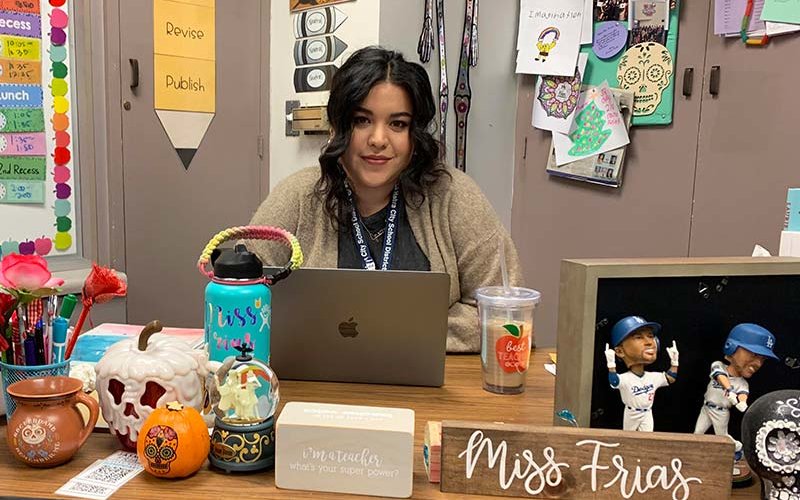
As an elementary school teacher, Jasmine Frias strives to foster an environment of equality and inclusivity in her classroom.
“School is more than learning reading, writing and math,” said Frias, a graduate student in the master’s in education-educational technology program. “It’s about encouraging students’ growth beyond the classroom to become active participants in their schools and communities.”
Frias is among workshop presenters at the Saturday, Feb. 23, “A People’s Education Conference,” centered around the themes of “radical joy and transformative justice” in Titan Student Union Portola Pavilion. Organizers expect more than 500 K-12 teachers and teacher candidates from Orange County and Los Angeles to attend the conference, presented by Cal State Fullerton, Cal State Dominguez Hills and the People’s Education Movement.
A teacher at Sierra Vista Elementary School in La Habra, Frias, along with fellow Titans Kayla Grassbaugh ’13 ( B.S. child and adolescent development), Casey Montano ’16 (B.S. child and adolescent development) and Nadia Orozco ’12 (B.A. art-studio), all teachers at Camino Nuevo Charter Academy in Los Angeles, will present “A Young People’s Education: Social Justice Teaching in Elementary Classrooms.”
Frias, who earned her bachelor’s degree in child and adolescent development in 2017 and also completed the multiple subject credential program in elementary and bilingual education at CSUF, discusses what it means to be a teacher of social justice.
What is social justice learning?
Social justice teaching is based on six elements of social justice: self-love, respect for others, social movements and social change, issues of social injustice, awareness-raising and social action. We are teaching students these six elements in order to provide them an education that is just, equitable and inclusive. Students deserve to have these elements within their education.
Why is social justice important in education?
Social justice is extremely important because it allows for a well-rounded education. Students are able to empower themselves and see the world through a different lens. Students deserve to find themselves within their education, and it is our job as educators to teach children to want to be lifelong learners and want to make an impact on society. They are the change.
What is the focus of your presentation?
Our presentation is about giving teachers ideas and tools so they are able to teach social justice practices within their classrooms. We want to provide them with an insight on how it is easily integrated into their daily curriculum.
What are some key takeaways for teachers?
We want teachers to be able to leave with tools and ideas of how they are going to teach these six elements. We want to show the simplicity of lessons and how easy it is to start the conversation. We also want to show that this can be done with any age of students — in grades from kindergarten to high school.
What are some examples of a social justice curriculum that you use in your classroom?
In my classroom, my lessons are based on the California standards, and I also integrate ideas and articles that elicit a conversation. For instance, my students read about civil rights, learn about people like Malala Yousafzai — the Pakistani activist for female education and a Nobel Prize laureate — and they write opinion pieces on how they can make a change within our communities. My classroom norms are based on community-building and allowing students to feel that they are making a difference within the classroom and school community. As Yousafzai said: “One child, one teacher, one book, one pen, can change the world.”